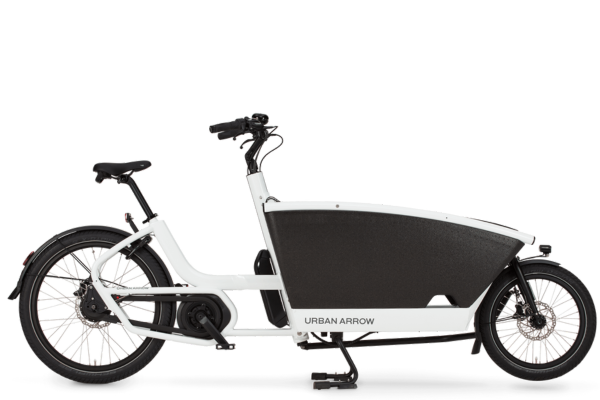- Uncategorized
Bike subscriptions : comparing plans and how to choose the right one
Introduction
Bike subscriptions are becoming increasingly popular among city dwellers. They address the challenges of urban and sustainable mobility. Instead of buying a bike, many people opt for long-term rentals or self-service bikes. This trend goes hand in hand with the rise of cycling in France, with a goal of 12% of trips by bike by 2030 (compared to 2.7% in 2019).
Choosing the right subscription makes it easy to get around while reducing pollution and traffic jams.
What is a bike subscription?
A bike subscription refers to a rental plan for a fixed period, with monthly or yearly payments. Unlike buying, it allows you to use a bike without owning it. Maintenance, insurance, or assistance are often included.
- Self-service bikes (VLS): available at stations throughout the city. The subscription gives access to a network of bikes for short trips.
- Long-term rental (LLD): the bike is assigned to a user for several months. It's an alternative to buying, with the advantages of flexibility and included maintenance.
Private companies also offer plans with additional services. Here are the main options.
Advantages and disadvantages of bike subscriptions
Advantages of bike subscriptions
- Financial savings: Subscriptions are often cheaper than buying, especially for electric models. For example, Véligo offers an electric bike for €40 per month—far less than the €1,500 purchase price. Maintenance is also included, avoiding unexpected costs.
- Flexibility and simplicity : A subscription frees you from the constraints of ownership. It is often easy to cancel. Ideal for testing urban mobility or for temporary use. Maintenance is handled by the provider.
- Environmental impact: Using a bike reduces CO₂ emissions. According to ADEME, an electric bike user drives 236 km less by car each month on average. This shows a real ecological impact, especially in cities.


The disadvantages
- Long-term cost: Over several years, a subscription can end up being more expensive than buying, especially for a basic bike.
- Dependence on the service: With self-service bikes, availability can be an issue. In long-term rental, you need to ensure the bike stays in good condition to avoid repair charges.
- Geographic availability: Not all areas are covered. Large cities are well equipped, but smaller towns are less so.
The different types of bike subscription plans
Self-service bikes (station-based shared bikes)
Self-service bikes (VLS) are urban bikes available at shared bike stations throughout cities. This service, popularized by Vélib’ in Paris, has now expanded to most major French cities. All large cities offer this bike subscription system, making urban mobility more flexible. (ADEME).
- How it works and pricing :
The subscription is often annual. It allows you to take a bike from one station and return it to another. The first 30 minutes are generally free. In Paris, the plan starts at €14/month for mechanical bikes, and €60/month for electric ones.
- Advantages and limitations :
VLS are a cost-effective solution for occasional or daily short-distance urban trips, without the hassle of maintenance or parking at home. However, users may sometimes face a lack of available bikes or free spots at stations, especially during peak hours or in certain neighborhoods.
Long-term bike rental (LLD)
Long-term bike rental is aimed at renting a bike for an extended period, usually from a few months to a year or more. This service is often offered by local authorities or public operators to promote sustainable mobility, especially the use of electric bikes (e-bikes) for commuting.
Véligo Location in Île-de-France offers the largest long-term electric bike rental service in the world. Launched in 2019, Véligo allows users to rent an e-bike for an initial period of six months, extendable by three months, at a cost of €40 per month, reduced to €20 if the employer contributes via the sustainable mobility package. This offer includes the rental of an e-bike equipped with a lock, lights, basket, and regular maintenance. (Île-de-France Mobilités).
Other cities, like Lyon with its Vélo’v long-term service, offer similar plans. Long-term rental provides access to a quality bike, often electric, without a heavy initial investment. At the end of the subscription, the user can return the bike or, in some cases, buy it at a discounted price.
Bike subscriptions offered by private companies
Several private companies have launched bike subscriptions, offering personal bikes to customers with premium services such as on-demand maintenance and flexible commitment terms.
Swapfiets, for example, offers a subscription service where, for a fixed monthly fee, the subscriber receives a bike recognizable by its blue front tire. In case of a problem, Swapfiets guarantees repair or replacement within 48 hours. Prices start at €15.90 per month for a standard city bike and can reach €50 to €75 per month for electric bikes (Swapfiets).
Other providers like Motto or Dance offer similar services, as well as specialized retailers like Decathlon, which offers long-term bike rentals starting at €15 per month (Decathlon Rent). These options are ideal for those who prefer having a bike without the hassle of ownership.
Comparison of the main bike subscription offers in France
Vélib’ Métropole (Paris) – Vélos en libre-service
- Pricing: Starting from ~€3 per month (€37.20/year) for mechanical bikes, and €9.30/month to include electric bikes.
- Advantages: Offers 1,480 stations in Paris and nearby suburbs with high availability of 20,000 bikes, 40% of which are electric. Website: Vélib’ Métropole
- Highlights: The largest self-service bike network in France, making access and urban mobility easier.
Welgo – Long-term bike subscription with all-inclusive insurance
- Pricing: Starting at €169/month
- Advantages: Offers a bike subscription with all-inclusive insurance, ensuring a worry-free experience for users. Website: Welgo
- Highlights: Welgo stands out with its comprehensive approach, including insurance and maintenance, offering total peace of mind to subscribers.
Véligo Location (Île-de-France) – Long-term rental of e-bikes
- Pricing: €40/month, reduced to €20 if subsidized by the employer
- Advantages: Offers a fully equipped electric bike with maintenance included, available at around 300 pickup points in the Paris region Website: Welgo
- Highlights: Public initiative by Île-de-France Mobilités aimed at promoting the shift to electric bike use with a large fleet.
Comparison of the main bike subscription offers in France
To choose the right bike subscription, it’s crucial to assess your needs and usage context. Here are some important criteria to consider:
- Usage and frequency of trips:
- Daily: If you use a bike every day to go to work, choose a long-term plan or a private subscription with a dedicated bike.
- Occasional: For occasional use or short urban trips, a subscription to a self-service bike service is sufficient.
- Distance and type of trip:
- Long trips with elevation: An electric bike subscription is ideal for longer routes without excessive effort.
- Flat and short trips: A classic mechanical bike is sufficient.
- Usage and frequency of trips:
- Set a budget: Define an acceptable monthly range for yourself.
- Compare costs: Evaluate the cost of subscriptions against alternatives (public transport, car, bike purchase).
- Financial aid: Look for financial support, such as employers reimbursing 50% of the subscription or government conversion bonuses for purchasing or renting an electric bike (Naolib, Service Public).
- Commitment vs flexibility:
- Commitment duration: Check the minimum commitment period. Annual VLS subscriptions are generally financially low-risk.
- Cancellation conditions: For more expensive plans, make sure you can cancel easily, like the no-commitment plans from Swapfiets.
- Local context:
- Available offers: Consider the services available in your area. Take advantage of shared bike networks if your city has them.
- Adaptation to the environment: If you live on the outskirts where options are limited, a subscription to a personal bike might be more convenient.
En résumé, le meilleur abonnement vélo est celui qui correspond à votre profil et à vos besoins de déplacement. N’hésitez pas à comparer les offres et à tester un service pour une courte période pour vous assurer de son adéquation avec vos attentes.
Subsidies and sustainable mobility: a lever to democratize bike subscriptions
Financial aid to promote access to bike subscriptions
In the context of ecological transition, public authorities have implemented various subsidies to encourage sustainable mobility. These aids, whether local or national, make bike subscriptions more accessible and encourage users to choose alternatives to cars. Several local authorities offer support for long-term rental of electric bikes, often in the form of partial reimbursement or mobility bonuses.
The government also offers an ecological bonus applicable to the purchase or rental of an electric bike, including long-term subscriptions (service-public.fr). Meanwhile, more and more employers are using the sustainable mobility package to cover up to €700 of commuting transport costs, including bike subscriptions (entreprendre.service-public.fr). These measures enhance the appeal of biking as an economic, practical, and ecological solution for daily commuting.
Welgo: A custom electric bike subscription offer
Our subscription bikes: cargo, compact, tricycle...
Welgo offers a varied range of electric cargo bikes for subscription, tailored to the needs of families and professionals. Here are the main models available:
- Tim – Tern HSD: Compact cargo bike designed to carry a child or an adult, offering exceptional maneuverability in urban areas.
- Alex – Tern GSD: Designed to carry up to two children, this model provides a ride similar to a classic bike with increased loading capacity.
- Léon – Bike43: Combining comfort and capacity, this model is ideal for urban trips with multiple children.
- Sam – Urban Arrow Family: Equipped with a front box, it allows for easy transport of children or goods while maintaining smooth handling. Welgo
- Max – Winther: Featuring three wheels, it provides optimal stability, perfect for transporting passengers or heavy loads safely.
Modalités de l'abonnement Welgo : tarifs, durée et services inclus
- Maintenance and service: periodic revisions and repairs covered.
- Comprehensive insurance: coverage against theft, damage, and breakage with no deductible.
- Assistance 7/7: breakdown service with home intervention and taxi option if needed.
- Family Pack: accessories such as a lock, phone holder, and other equipment for optimal family use.
In conclusion, a bike subscription is great for getting around the city. Whether it’s a self-service bike or a long-term electric bike rental, it’s an economical and eco-friendly way to travel. Follow the tips in this guide, compare the offers, and you’ll find the perfect subscription for your trips. Happy biking!
How does a bike subscription work?
A bike subscription allows regular access to bikes, often through shared stations or rental services. Users pay a periodic fee to access the bikes.
What are the different types of bike subscriptions available ?
The options include self-service bikes mainly for short trips, long-term rental bikes for more frequent use, and subscriptions for electric bikes to ease longer or hilly rides.
Why choose a bike subscription over buying your own bike ?
A subscription eliminates maintenance and storage concerns, and can be more economical for those who don’t use a bike regularly. It’s also a flexible option for trying out different types of bikes.
Are bike subscriptions eco-friendly ?
Yes, bikes reduce dependence on cars and decrease CO2 emissions, contributing to a cleaner and more sustainable urban environment.
How can we evaluate if a bike subscription is worth it?
Consider how often you plan to use the bike, the availability of services in your area, and compare the subscription cost with other modes of transport to determine if it fits your mobility needs and budget.


